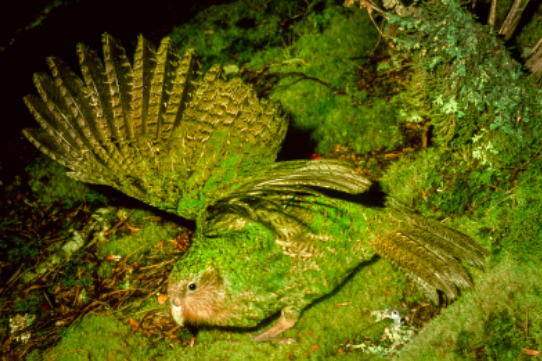Rod Morris has been telling stories about our natural history for more than four decades. He’s been a zookeeper, a teacher, an author, and a wildlife ranger. For half of that period, he was a natural-history filmmaker, producing and directing documentaries about some of our best-loved birds – kiwi, kākāpō, kōkako, kea, kakī (black stilt), and kakaruia (black robin).

These days, nature photography and public speaking occupy more of his time, and his focus is on the ‘lesser-known creatures’ – especially reptiles and invertebrates. He is also concerned about threatened environments like the montane coal measures on the West Coast and the Canterbury plain’s braided river systems.
We asked Rod, where did your interest in conservation began?
My interest began when I was 14 years old, a school friend suggested I might be interested in the Hamilton Junior Naturalists Club. So I joined and began learning about the natural world, and how we must protect it.
On club field trips I began to learn about secretive native birds like kōkako and spotless crake, and about smaller animals like Schizoglossa the pāua slug, and strange subterranean plants like Dactylanthus, the ‘wood rose’. One club night Johnny Kendrick, a guest speaker, came and talked to us about his work in the NZ Wildlife Service. Johnny made movies and sound recordings for the Wildlife Service. That particular night he showed his latest film about a special island, Adams Island, unspoiled and full of unique plants and animals. There were giant purple-flowered mega herbs or Pleurophyllum, and a shy bird called the subantarctic snipe. I was utterly absorbed by the film. That’s where the interest began for me, that night with Johnny’s film. I went home and told my parents that I was going to join the Wildlife Service.

What have you learnt from your work filming and photographing our native species?
As every proud parent who has taken a photograph or video of their newborn knows, photography is a powerful way to connect with others over something important. Johnny Kendrick felt Adams Island was a very important place. He wanted others to realise that, so he made a film. When I saw the film, I wanted to join the Wildlife Service and help protect such places. Documentaries and great photographs can inform us, and change our way of thinking.
Being involved in New Zealand’s conservation journey since the 70s, how has conservation changed in your eyes?
I think the seismic shift in the number of volunteers that now help the conservation effort, is what impresses me the most. Many New Zealanders care about the outdoors, but more people now seem to be engaged in playing an active role. Everywhere I look there are volunteers.

Everywhere I look there are volunteers. Community trappers donate their time to ‘Predator Free’, servicing and replenishing their traps as regularly as they put out their recycling. An army of volunteers on Codfish Island assists DOC as ‘nest minders’ during the kākāpō breeding season. Others volunteer their time in sanctuaries like Zealandia or plant out forests on islands like Tiritiri Matangi. Volunteers have cleaned up rubbish on flood-damaged Westland riverbeds and beaches around our coastline. New alpine gecko and skink species are being discovered by volunteers now searching in our mountains. In our schools, teachers and volunteers engage with children throughout the year, especially during Seaweek and Conservation Week.
It’s all part of the school curriculum, and when the children go home, they teach their parents. I think in the past, we took the environment for granted. Now we are beginning to see the issues ahead of us, and children want to help.
What do you see for our future?
Many of us know that we are running out of time.
I am now 70 years old, and I look back over a lifetime where the number of lions, elephants and rhinos have dwindled on the African savannah, and where there are fewer whales and dolphins in the ocean for our grandchildren to enjoy. The toll on wild mammals in the last 50 years has been catastrophic. Half of all wild animals have disappeared in less than the time I have been alive. They have been crowded out by people and domestic animals.
Today, there are now an estimated 40 domestic animals for every wild animal left as we exploit, rather than facilitate and protect the natural world. How we deal with the future will be decided over the next few years. What choices will we make? Will we continue producing and consuming meat and dairy as we are currently doing? Will we still fly off on our holidays, and drive around in our vehicles? If so, the earth will quickly reach a tipping point there is no coming back from. Or will we realise that we are the generation that must bring about change? Change what we eat and how we produce it, change how we live and work, and change how we move about. There is very little time left, and a lot we have to do. We will all need to help


